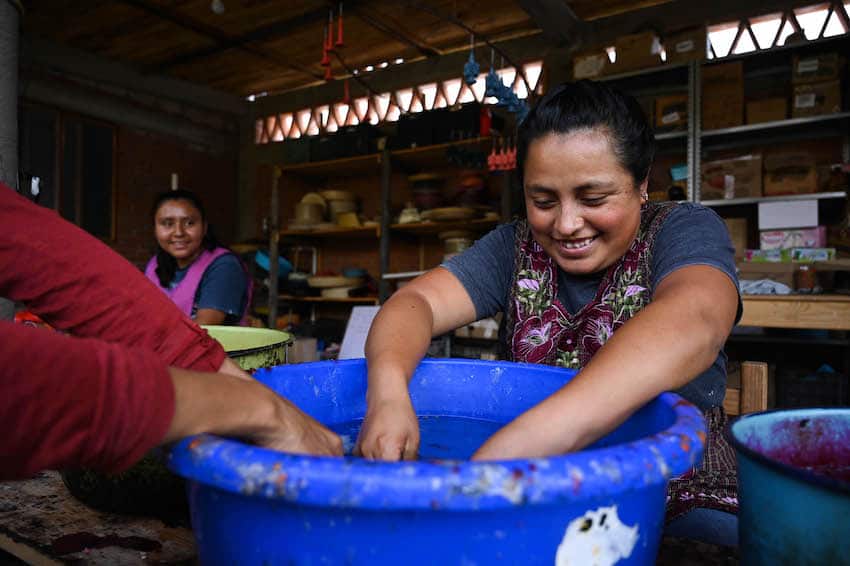Down a dusty side street, near the heart of the town of Teotitlán del Valle, Oaxaca, Liliana Ruiz López and her family run a candlemaking workshop called Velas San Pascual. It was founded in 2011, but the family has been passing down the tradition of candlemaking for three generations.
According to Liliana, “most of the candlemakers here in Teotitlán inherited work from our great-grandparents.”

And the generations of knowledge passed down shows: their stunning creations hang from the walls and fill tables in an abundant feast for the eyes. Candles in every shape, size and color. Nor are the colors random: each different color represents specific personality traits — white for purity, blue for serenity and orange for vitality.
Liliana invited me up to the second floor, where the practical side of the workshop is located.
The air is sweet with the aroma of locally sourced beeswax in the process of melting. The naturally yellow wax is made into thin bowls by dipping a jicara (gourd) into the liquid. These bowls are then put in the sun to bleach, creating a white base to color with natural dyes.
As Liliana showed me around, her cousins worked on intricate wax flowers. They were making petals by using wooden molds dipped in hot wax before submerging them in cold water.

Originally these candles were known as velas de concha (shell candles) because shells were used as molds to make the flowers.
The flowers are then attached to the base of tall candle stems to make an ornate arrangement. They make the stem by hanging cotton wicks from a suspended metal ring.
The artisans bathe each wick in wax, building up layers: ceremonial candles can be almost 2 meters tall, taking hundreds of wax “baths,” and weeks of patient work.
Traditionally, these candles were used as part of a marriage proposal ritual.

Lila described how in Teotitlán, “when asking for the hand of a bride, it is important to carry these candles as symbols of spirituality, abundance and prosperity, and to unite the family of the bride and groom.
“The light, or the fire, is what will guide the path of that couple,” she said.
Liliana recalls that when her husband Gregorio Montaño Pablo proposed, he brought an immense number of candles.
“His whole family participated. My whole family participated. It’s very nice to be part of this tradition.”

The other main reason to make candles was for the Catholic Church. These candles were expected to be a donation, rather than a commercial sale.
One of the first candlemakers to counter this tradition was maestra Viviana. After her husband fell ill, she began to sell candles to support her family. The controversy led Viviana to be marginalized for many years.
Fortunately, Viviana persevered, and the restrictions led to innovation in her candles. Now she is an inspiration to many and has helped revive the practice of candlemaking. Her efforts paved the way for workshops like San Pascual, and now the elegant candles of Teotitlán can be found around the world.
Anna Bruce is an award-winning British photojournalist based in Oaxaca, Mexico. Just some of the media outlets she has worked with include Vice, The Financial Times, Time Out, Huffington Post, The Times of London, the BBC and Sony TV. Find out more about her work at her website or visit her on social media on Instagram or on Facebook.
